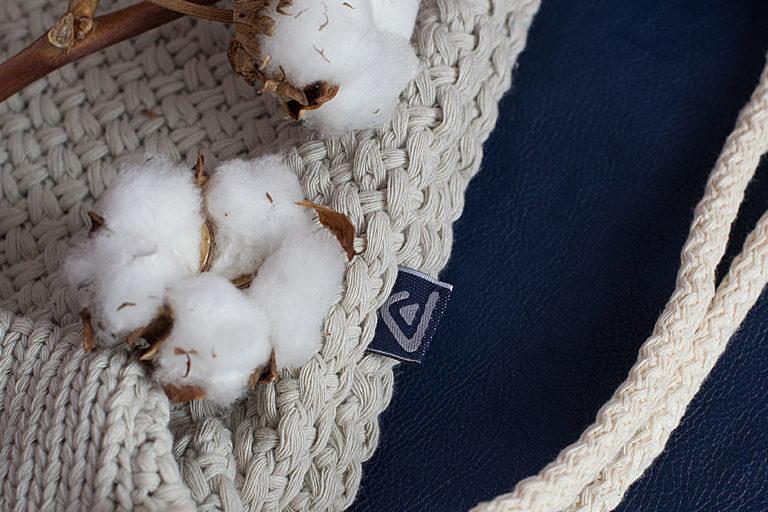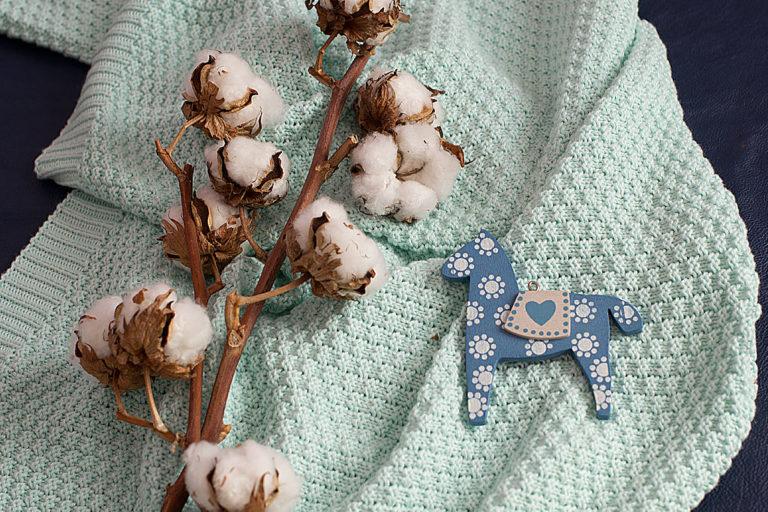How to choose clothes made of good quality cotton?
Good clothes are those that make you feel like you're wearing a second skin.
It doesn't press or scratch anywhere. You feel comfortable in it.
The material is pleasant to you, and its appearance, texture and form do not change despite use. Here you will find information on how to choose clothes made of good quality cotton.

by Kasia Korkosińska
How to choose clothes made of good quality cotton?
Look closely at the material (knitted or fabric) it should be delicate, soft, elastic and shiny, resistant to pilling, but we cannot check this by looking at the product.
Let's look for more information that can be found on the tag, tags and labels placed on the product.
Check the place of production.
If the manufacturer of the product is Egypt, the USA or Sudan, you are dealing with the best cotton in the world, because these countries have ideal conditions for growing cotton. The length of the fibers they obtain is Type-1, i.e. the fibers are from 35 to 60 mm long. They cultivate GIZA species (Egypt),PIMA i Sea Island (USA), In the summer(Sudan) such inscriptions can be found on tags and labels attached to the product.
Types of cotton.
Egyptian cotton or GIZA - means the highest quality cotton grown in Egypt, this raw material has up to 1000 threads per square inch.
PIMA is named after the Peruvian tribe of Pima Indians. This variety grows only in mild, dry and warm climates. Its uniqueness lies in the fact that the long fibers give maximum softness to the material, because there are fewer fiber ends coming out of the fabric.
The result is a smooth, flexible and peeling-resistant material that does not deform and has a delicate shine.
Pima is the strongest and most durable cotton of all.
You may come across the name SUPER PIMA ( SUPIMA ) - this is the name of the trademark.
American growers created this brand to maintain the quality of PIMA . SUPIMA is Pima cotton grown only in the USA,
its price is three times higher than the price of ordinary cotton.
For comparison, there are two more types of cotton:
Type 2 is cotton with a fiber length of 13 to 33 mm mainly grown
in Usa.
The least valuable is cotton: Type 3 with the shortest fibers from 9 to 25 mm, grown in Asian countries.
You can still find it on the tag.
The designation, combed cotton , indicates that combing has removed impurities from cotton picking and removed the shortest fibers. Only good quality fibers are subjected to this treatment. This processing allows you to arrange individual threads
into even strands from which a smooth and even thread is spun, then, as you already know, this affects the pilling and the delicacy of the fabric.
The label says: mercerized cotton. This means that the fiber was rinsed in soda lye and during this process it was thoroughly cleaned of proteins and other impurities, leaving pure cellulose. Only good types of cotton are subjected to the mercerization process,
it gives the product a delicate shine. Thanks to this process, very intense colors can be obtained during dyeing.
Organic Cotton – means that the cotton is grown in soil that has been grown for at least three years
was not exposed to chemicals. In particular DDT, artificial fertilizers, plant protection products and insecticides.
Pests in such a plantation are combated with biodegradable substances such as: citric acid, garlic, alfalfa, and fertilized with manure.
Cotton is picked by hand and only ripe fruit is harvested. In a day, a worker can collect 110 kg of bags, which is as much as a machine in an hour.
Organic cotton can only be dyed with natural dyes. Of course, the most expensive organic cotton is the colorful, undyed one. The largest suppliers of organic cotton are China and Peru.
COLORFUL COTTON.
The increase in demand for cotton, the spread of artificial fertilizers, and in particular DDT, which was cheap and easily available, resulted in it being used generously on plantations. The result was the development of pest resistance and the disease of people working on plantations. Years later, the remains of plant protection products and insecticides could be found in finished products. Consumers began to complain about allergies and other skin diseases.
American researcher SallyFox devoted 20 years to restoring the colorful cotton known 5,000 years ago, cultivated in what is now Peru and North America. Back then, the seeds growing on hair were not white as now, but in natural shades of beige and brown.
and greenery. In cooperation with growers who, like her, noticed the problem
with skin irritation caused by chemical dyes and environmental degradation caused by conventional cotton cultivation,
they started trying to restore the cultivation of colored cotton. Clothes were sewn
made of organic cotton, they are incredibly soft, pleasant to the touch, elastic and strong.



A 100% cotton label with this inscription means that 15 g of pesticides and artificial fertilizers were used in its production. Machine harvested, cleaned and bleached. Its production poisons the user and the environment.
Recycled cotton is made from offcuts, scraps and waste. It is soft and pleasant to the touch, but because the fibers are not very long, it is not very durable. Thin products may wear out faster. However, it has a great advantage: it is environmentally friendly because it does not generate a carbon footprint.
Certificates confirming the good quality of cotton.

The GOTS certificate guarantees the naturalness of products from organic farming, based on international guidelines. Products should not contain any materials produced using GMOs. The certificate covers the entire production process, from seeds through plant cultivation, cotton harvesting, processing, packaging, packaging, labeling and distribution. This certificate is the leading standard in ecological textiles, issued for a year.

Oeko-Tex Standard 100 - this is a safety mark for textile products. I guarantee they are free
from harmful substances in concentrations that have a negative impact on human health, including: pesticides, chlorophenols, formaldehyde, allergenic dyes, prohibited nitrogen dyes
and extracted heavy metals. The certificate is awarded by the Łukasiewicz Textile Institute in Łódź.
Advantages and disadvantages of cotton.
Cotton is very durable, but prone to creasing. It colors very well. It absorbs water perfectly, so it is perfect for dressing materials, diapers and cotton pads . However, be careful with damp cotton clothes, they rot easily and this process cannot be reversed - the clothes are irreversibly damaged. Hang damp and wet items immediately to dry completely.
Cotton doesn't work well in products such as winter hats - it keeps you cold
and holds moisture, for the same reason it is avoided by mountain climbers, skiers and snowboarders. It is exceptionally kind to the skin, which makes it the main raw material used in the production of clothing for babies and children. Cotton is easy and cheap to produce and process, which translates into due to its popularity and relatively low price.
With this knowledge, you are ready and you already know how to buy clothes made of good quality cotton.
I would like to give you some additional information about cotton. Maybe it will interest you.
THIRSTY COTTON.
False information is published on Internet websites and blogs about the ecological disaster of the aquatic environment due to cotton cultivation. This is false information spread by the lobby of synthetic producers. As I wrote at the beginning of this entry, Cotton plant does not need a lot of water.
Yes, plantations of the highest quality products are sometimes watered, but water consumption for cotton production accounts for 3% of water consumption in the entire global agriculture. The only case in the world where cotton cultivation resulted in the destruction of the water system concerns the Aral Sea. This happened in the 1950s and 1960s, but it was not cotton cultivation that caused the reservoir to dry up, but the inept economy of the Soviet Union.